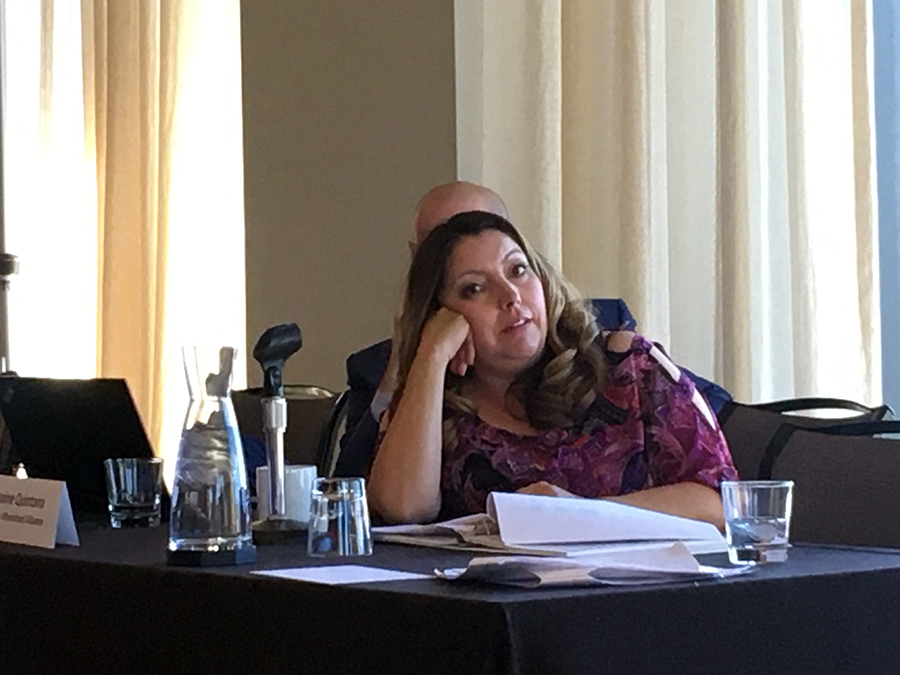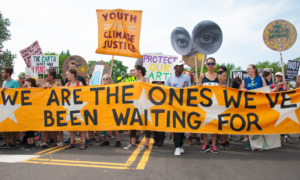
Marcia Ward
.
DENVER — The green skunky smell of lushly growing marijuana fills the air as drivers travel down the highway leading from Denver International Airport into the city. The odor wafts from grow houses that line an industrial stretch of road.
But it’s also the smell of money. Tax revenue collected from legalized marijuana growing has flowed to state and local government, as well as to an after-school agency that took care to position itself in the stream.
Last year Denver collected about $46 million in marijuana tax, said Denver Mayor Michael B. Hancock. The Denver Afterschool Alliance now receives $1.5 million yearly for after-school and summer learning programs and has expanded programs in under-resourced neighborhoods and provided more training for the program staff.
“Denver became the first city in the U.S. to implement recreational marijuana,” Hancock told a gathering in Denver Nov. 7-8 organized by Every Hour Counts, a national coalition devoted to building citywide after-school systems and expanding learning opportunities to all youth. “If people are going to buy marijuana then we’re going to make sure it supports our young people.”
In 2012 Colorado approved the recreational use of marijuana for adults, with a tax earmarking some funds for education. Denver also levied a special tax on marijuana sales — now 5.5% — so that the total marijuana tax rate in the city is about 25%.
The ability to make a strong case for the benefits of out-of-school time programs was critical in gaining a share of the city’s special sales tax, said Maxine Quintana, director of out-of-school time Initiatives for Denver’s Office of Children’s Affairs and co-founder of the Denver Afterschool Alliance, a network of after-school providers.
Another factor was the mayor’s already strong commitment to out-of-school time. He pioneered the My Denver Card, which gives school-aged children unlimited access to city recreation centers and, in many cases, after-school and summer enrichment programs.
In addition, the after-school alliance positioned itself as the entity best suited to protect and inform youth in the brave new world of legalized marijuana.
Denver Afterschool Alliance took action
As marijuana became legal, after-school providers felt unprepared. They didn’t know how to handle questions from kids about drug use.
With the first funding of $500,000 in 2012, the Denver Afterschool Alliance created a
curriculum based on principles of positive youth development to provide kids with information about marijuana use.
Healthy Lifestyles 101 is a 10-hour curriculum for fifth through ninth graders, aimed at debunking myths about marijuana, helping after-school providers approach the subject and making sure youth know the legal age of use is 21. It challenges misconceptions that, like cigarettes, people only have to be 18 to buy marijuana, and that because it is a plant, it is healthy and good for you. Some health risks are noted, and the course challenges a belief among some kids that everyone their age is using marijuana, according to the Alliance.

Stell Simonton
Maxine Quintana, director of out-of-school time initiatives for Denver’s Office of Children’s Affairs and co-founder of the Denver Afterschool Alliance, says it was crucial to use data and to rearticulate the benefits of after-school programs.
Providers get training and materials along with the curriculum.
“I wanted to be able to show … that after-school programs were good protective factors,” Quintana told after-school leaders at the Every Hour Counts gathering.
The stated goal of the curriculum is to enable middle schoolers to make positive decisions about marijuana.
Middle school is the time when many kids first try marijuana, said Daniel Read, evaluation analyst with the Alliance.
“The key policy challenge is to keep youth [marijuana] use down,” he said.
Quintana said she had armed herself with data to show the city the impact of the Healthy Living curriculum and of after-school programs in general. Alliance data also showed how Denver neighborhoods compared in measures of child well-being — and which areas had the most need.
The Alliance was able to make a strong case for after-school programs being the best place to inform kids about marijuana use. Its funding tripled to $1.5 million by 2016.
As other cities and states consider legalizing recreational use of marijuana, more after-school providers are looking to Denver’s example, Quintana said. Alaska is directing funds from legalized marijuana into after-school prevention education and will be using the Denver curriculum.
Quintana has advice for after-school networks in areas that are considering legalizing marijuana:
- Ensure that city leaders understand the value of after-school and summer learning.
- Let them know that after-school is the ideal environment — a safe and supportive place with trusted adults — for youth to learn correct information about the legal status of marijuana and its associated risks.
- Involve the community’s after-school providers in the process.



























